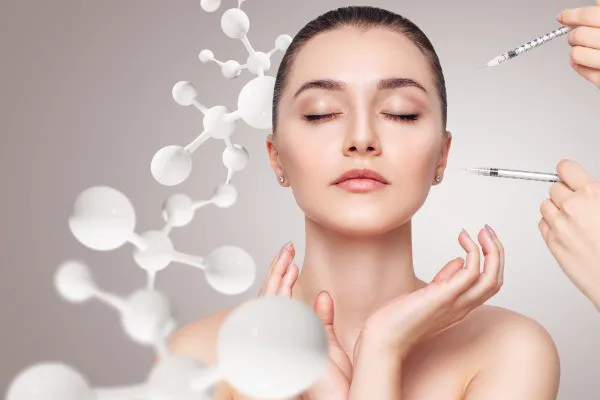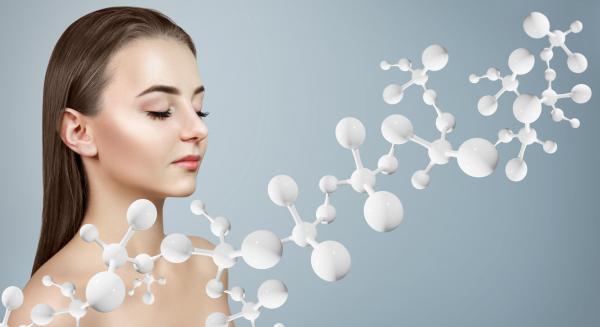
Regenerative esthetics: A comparative discussion
Dr Abs Settipalli gives his views on the rise of regenerative aesthetics and how they fit into existing practice

Exosomes, polynucleotides, amino acids – there’s a lot of talk on ‘regenerative medicine’ nowadays. There seems to be little talk about comparing them, and knowing which to go with seems to exist, though. It’s an important discussion to be had if we are to do right by our patients.
The most important aspect of entering this comparative discussion is to remain objective and factual in order to draw a valid conclusion. This means ignoring opinions and, most importantly, marketing.
Factually speaking, we can see what changes these products are attempting to make in the skin with the data the brands provide. For instance, all these products talk about the fact that they produce collagen. However, clinicians must understand this is a copout and an extremely vague statement. Why? There are 28 types of collagen, and when it comes to tightening the skin, for example, most are completely useless.
Much is made of the ability of polynucleotides to produce collagen type I and III with ‘a bit’ of IV and VII. Yet some exosomes can help produce the same collagens as can implantables like PLLA. So, if they all aim to produce mainly type I and III, what benefit is there of choosing one over the other?
A better understanding of how tightening works anatomically is needed to answer that question. Again, factually speaking, tightness comes from bringing the layers together tighter. When we wish to tighten some papers together, we put a staple physically through them all and hold them together in a strong clasp. Do collagens I or III go through different layers? Factually speaking, no.
So what does? Proteins like collagens 17/4/7, laminins, fibronectin, etc., make up the DEJ, allowing the epidermis and dermis to come together tighter. None of the aforementioned products can claim that they produce the maximal physiological increase of those collagens such as IV and VII of any product in the world. In fact, collagen I is only held in position by using two strands of collagen VII that reach into the reticular layer under the DEJ like a child reaching down with both arms to hold a dropped ball as a matter of anatomical fact. So ask yourself: if COL1 is only given position (and therefore function in the dermis) from COL7, then how can increasing COL1 without maximal COL7 increase give any tightness increase? It can’t.
One must 100% understand the meaning of ‘physiological increase’ in this context too. When you treat a patient and an increase in collagen is seen – that’s a reaction. When the reaction completes, the baseline production rate is resumed. What if the baseline itself was increased to where the reaction level took us before such that we don’t have to keep injecting the patient every week for the rest of their life? That baseline is what we term the physiology and marks the difference in these products, giving a reaction and an increase in physiology. Why is this important? Results can last longer, be more intense and come much quicker.
So, which modality gives us the maximal physiological increase in these important proteins, not just COL1 and COL3? Well, the answer lies in reading between the lines of these brands. Specifically, the fact that none of them uses the words ‘maximal physiological increase of COL4 and COL7’, etc., apart from one. It’s an exceptionally bold statement to make that isn’t done lightly or without vast amounts of proof to prevent litigation - hence why almost no one makes it.
The one product that makes this claim and has never had competition for it is Sunekos. What is it? It is an injectable product that has stood the test of time for many decades and is much simpler in formulation than many of the other available products. Could it be because humans haven’t evolved to need salmon sperm in their faces (polynucleotides)? The answer should be obvious.
When we take cancer and place it into a collection of healthy cells, most would say that what would happen is that the cancer spreads. However, Mintz 19751 showed us that the opposite can be true. This paper is one of the founding pillars of regenerative medicine. Why did this happen? Because the cells are ‘doing’ cancer. The environment was ‘doing’ perfect health. The environment won the ‘doing’ war and overpowered the cell. This shows unequivocally that cellular dysfunction can sometimes be a product of and be corrected by correcting the extracellular matrix. Are you surprised now why so many products nowadays talk about ‘regeneration’?
However, there is only one ideal ECM. When we are growing as foetuses and children, we don’t play pick and mix with our ECM for optimal health - evolution has one choice and one choice only. Last time I checked, salmon sperm was not included. Finding this fine balance in ECM composition means finding the right balance of signalling molecules such as HA, elastin, fibronectin, collagens (yes, collagens can be signalling molecules), etc. By nature, there is only one correct answer. This correct answer would maximally physiologically produce these collagens aforementioned, which seems to be beyond the scope of other products. Sunekos has patented this ECM balance, and this is the factual reason no product in the world can do the same thing. For example, if a patient wanted more elasticity in their skin, which type of collagen is ideal? None; elastin provides elasticity, as the name suggests. When most products in this category can’t maximally produce it, how useful are they really? Factually speaking (again), Sunekos is the only product to claim maximal physiological production of this protein, too, as a result of hitting the ECM jackpot.
Its composition is non-crosslinked HA (not for hydration, but for signalling processes) and a balance of 6 amino acids: glycine, proline, alanine, valine, leucine, and lysine. ‘Balance’ is the operative word here; anyone can use the same amino acids, but the patented ratio between them is what creates nature’s desired ECM and can’t be copied - hence why the results are never copied. What’s the result of all this?

Instead of needing multiple sessions over 1-2 months with something like polynucleotides, Sunekos shows improvements and sometimes clearances of the problem after just one session. The results can last for close to a year, and the risk is exceptionally minimal because it is composed of ingredients already in the skin, which have simply reduced over time. Anecdotal conversation has led many to see that three times the number of polynucleotide sessions needed to achieve the same result as with Sunekos.
I am now completing case studies of using it for active severe acne that is being cleared after one session only. In another set of ongoing cases, eczema areas are also being cleared after one session. This is something most products and manufacturers dream of.
This ECM concept is universal. The clue to how ‘in line’ we are with what makes nature work at its best is the fact that Sunekos has branched into sports medicine, gynaecology, sarcopenia, obesity, COVID, cellulite, stretch marks, wound healing, orthopaedics, dentistry and much more. The concept across these different branches is identical. The only difference is the delivery vehicles to place the ingredients in the right place unhindered. For example, the electrolyte composition of the body’s interstitial tissues is very different from that of the face, so the composition around the ingredients must be considered. In cellulite, the pathophysiology contains high amounts of acidity - this is neutralised with the Sunekos Cell using alkalinity that prevents the active ingredients from being rendered useless before they have a chance to do their job. The full and in-depth theory of how Sunekos and ECM products work (with comparisons) is free on YouTube and the Dr Abs channel.
It should be clear now that the approach in deciding which products to use should begin with anatomical truths, which then dictates a need to compare physiological vs. reactive methodologies of gaining a result. The other portion is reading between the lines of what these many manufacturers state in their marketing and information. Admittedly, this is difficult - where else have you seen someone state the truth that COL1 doesn’t increase tightness without simultaneous maximal COL7 increase? However, with time, the free market should shift clinician’s choices once enough time has elapsed to see the difference in results.
